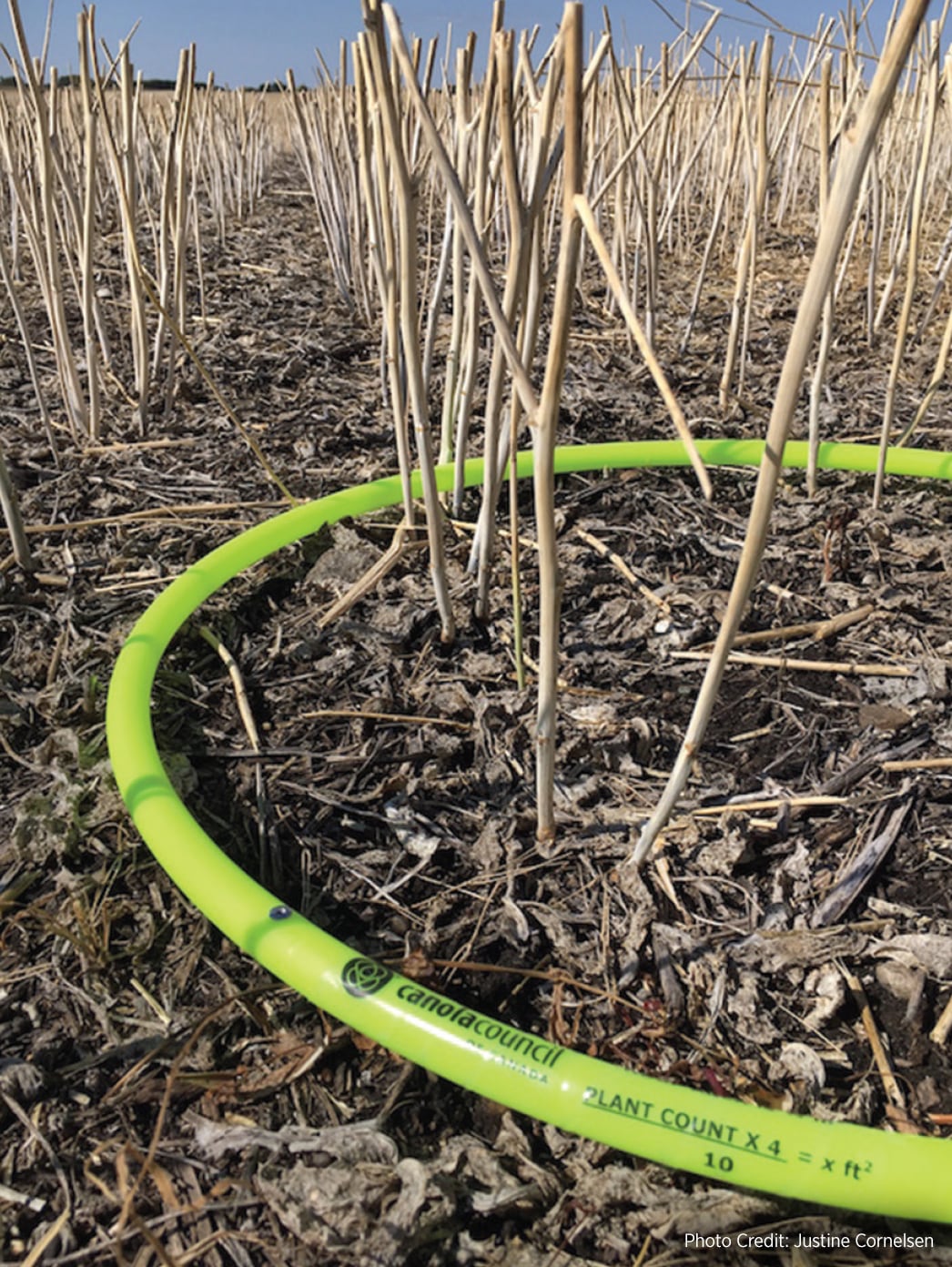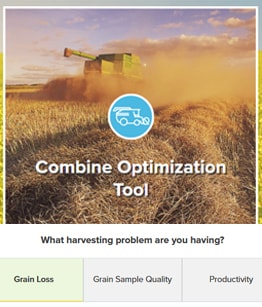Agronomy Insights
Choose the perfect hybrid for each field
One goal of the Canola Council of Canada agronomy team is to encourage canola growers to consider choosing hybrids based on the opportunities and challenges in each particular field. This approach is seen as one way to improve productivity and profitability of the crop. Here are some scenarios describing how a farm might benefit from adopting this strategy:
- To try clubroot-resistant genetics. This is a good strategy for most of the Prairies now that clubroot is fairly widespread. Fields that have used clubroot resistance at least twice may be good candidates for a new source of resistance.
- To take some pressure off the sclerotinia spray decision. Hybrids with tolerance to sclerotinia stem rot will provide some peace of mind in those situations where the decision to spray is not so easy.
- To address an increase in blackleg disease in a field. In that situation, growers will be able to choose a variety with a different major gene for blackleg resistance. A stubble test to identify the most common blackleg race in a field will allow rotation of major gene resistant germplasm using information available from many of the seed suppliers.
- To provide some harvest choices. Hybrids with improved straight cut features or pod shatter tolerance are better suited to late swathing and straight combining, which could provide a little more flexibility on harvest timing and method.
- To spread out harvest. Unless there are major delays with spring seeding, a good strategy to ensure an actual difference in maturity at harvest is to seed the earlier maturing hybrids first. Otherwise, if those earlier-maturity hybrids are seeded much later than later-maturing varieties, a useful difference in harvest time is unlikely.
- To hedge their bets on weather. Some hybrids may perform better or worse in certain environmental conditions. Because we can’t predict growing season weather, having a few different hybrids may hedge the bet somewhat. For a strategy, you could check canolaperformancetrials.ca and choose a hybrid that has high yield potential and another hybrid that is more consistent year to year. Seed companies want to start identifying hybrids that best suited to certain situations, such as soil zone, moisture or cool springs. They’re not there yet, but they might have some rough ideas on hybrids that seem to perform differently in different situations, so you might ask for their advice.
- To rotate weed management. Herbicide rotation is always good practice, but if you know your weeds, that can help drive some more specific strategies when it comes to canola hybrid choice. For example, the Roundup Ready system is better for Group-1-resistant wild oats, and the Liberty Link system is the better choice if the field has known or suspected Group-9-resistant kochia.
- To choose hybrids that may respond better to higher fertility rates. Some varieties may be more prone to lodging with increasing N rates.
- To expand marketing opportunities. A few fields seeded to a specialty canola variety could cover off many of the points above while also providing a different marketing angle with premiums, specified delivery dates, on-farm pick up or whatever features the contract provides.
Bottom line: If a farm grows only one canola hybrid and has an issue with performance, they may not be able to determine whether a different set of genetics might have helped in their scenario. With a variety of hybrids, cultivar performance can be analysed. Through this process, farms can start to do their own “phenotyping” – which is to analyze genetic performance based on local growing conditions.
Sclerotinia resistance keeps getting better
Corteva and its Pioneer Hi-Bred seed brand have been the leaders in sclerotinia stem rot resistance in canola. The current level of resistance provides good protection in situations where a grower isn’t quite sure the crop needs a fungicide spray. In situations where moisture is good and the risk is high, these varieties may still benefit from a fungicide application. If growers struggle each year with the decision to spray, they may appreciate a hybrid with some degree of resistance.
Aim for less than 2% harvest loss
Farmers can keep canola losses out the back of the combine to below two per cent of yield – which is one bu./ac. for a 50 bu./ac. crop. A PAMI survey last fall showed that many combines are performing quite well.
Between August 22 and October 18, 2019, PAMI visited 31 farms across Alberta, Saskatchewan and Manitoba, and measured canola threshing losses from 50 machines. These included 40 models from six combine manufacturers.
Each loss test was repeated three times per combine, and combine operators were asked to run at their normal settings and ground speed. The range of loss for the survey was 0.2 to 4.1 bu./ac. (0.4 to 10.7 per cent of yield), with an average of 1.3 bu./ac. (2.8 per cent). Surveyors also gathered information on weather conditions, harvest practices (straight-cut, swathed), canola variety (shatter resistant, non-shatter resistant), ground speed, grain feed rate and combine age.
Combine brand and model were not major factors. Interestingly, there was a trend of higher losses with newer machines, which more than likely correlates to higher horsepower and the ability for greater throughput.
Unsurprisingly, weather factors had significant influence on losses. This emphasizes the need to regularly adjust and test throughout the day and harvest season. Temperatures greater than 23°C, relative humidity less than 45 per cent, and low cloud cover all contributed to lower losses. Additionally, lower losses were found with swathed canola, non-shatter tolerant varieties, and with ground speeds less than 4.3 miles per hour.
The finding of higher losses with shatter-tolerant canola or straight-cut canola can be overcome by treating these as a distinct crop from swathed canola and adjusting settings accordingly, with, for example, more aggressive threshing.
Lost yield reduces the tonnes of harvested crop per acre, and increases the greenhouse gases produced per tonne of crop. Lost yield is also a waste of inputs and can increase management cost for volunteer canola.
A good reason to count stems at harvest
Average stem counts for each canola field harvested this year can put yield, quality and harvest date results in perspective and help with seeding rate decisions in 2021.
By collecting a few years’ worth of plant stand data and cross referencing it with seeding rates, yield, grade and maturity data for each field, farms can determine their own optimum target stand. Profit and risk are best optimized with canola plant densities of 50-80 plants per square metre (five to eight per square foot). Growers may discover that in some situations, 50 plants per square metre (five per square foot) is a suitable target while in other situations (weedier fields, shorter growing season, etc), 70-80 plants per square metre (seven to eight per square foot) is more appropriate.

Although lower plant densities may reach yield targets in some years, thin stands cause a decline in yield stability and predictability. Thinner stands will produce branchier plants that take longer to mature, leading to later harvests and an increased risk of fall frost that can lock in green seed.
Compare harvest counts to spring emergence counts. Canola plant counts can drop 10 to 15 per cent through the season. If plant density declines throughout the season, check scouting notes and consider the most likely reasons – self-thinning due to high plant density? insects? weather? disease? – and whether there’s a profit-improving way to prevent this. Seed choice may be part of the solution.
Use the calculators at canolacalculator.ca to help with target stand and seeding rate decisions. For tips on how to count, read “Why count canola stems in the fall?” at canolawatch.org.






 Try the Combine Optimization Tool at
Try the Combine Optimization Tool at